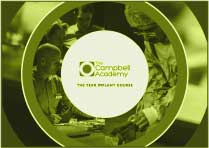.png?width=1627&height=517&name=Full%20TCA%20Logo%20(Purple).png)
Last year, (after considerable work particularly from Kath who looks after the research aspect of The Campbell clinic) we started phase 2 of our anterior aesthetic implant study.
Right now, were collecting the 5-year data on phase 1 to show long term stability of anterior aesthetic cases with guided bone regeneration (GBR).
This is the material presented in China this year and the stuff that I hope to present in other places too including the Geistlich study day on November 29th.
I’m not surprised by the 5-year outcomes of this study, because I knew it was happening in our practice anyway, but I am delighted that all the cases that we followed show really good objective aesthetic stability over that period of time.
I’m sure that other people think that their system does this too it’s just very few people have been able to show it and measure it.
Phase 2 of the study though is even more interesting again, because it mimics phase 1 only with a full digital protocol.
So, why might that be interesting to look at?
It might be particularly interesting if it doesn’t show a marked increase in the quality of what we provide, because then questions may be asked as to why we would do things digitally at all.
Far too many people (I suspect, including me previously) are shouting loudly and annoyingly that everybody must be digital as soon as possible but we need the evidence to catch up with that to show that it is actually in the patients’ interests.
This is a much more complicated equation and situation than most people can even begin to consider, because it must be taken in to consideration, not only the objective measured outcomes of what we do but also the patients mediated outcomes, these are perhaps more important than anything else.
Yesterday I received an email from Nish (who works with me at the practice) with a full clinical presentation of the first patient to go through the digital workflow in phase 2.
It’s safe to say that the upper left central incisor that has been restored is ok.
It’s not a staggering grand stand upper central incisor that you see at conferences all over the place, it’s a very good, stable, long lasting restoration for a patient.
Truth is though, the patient is delighted with this outcome and so to chase another outcome with other multiple procedures to improve the appearance overall would be unethical?
From what I understand from phase 1 of our study, it’s very likely that in 5 years’ time this upper left central incisor restoration will look exactly the same.
If I were to do (and I almost certainly will) a low dose CBCT at that time the graft material will be entirely stable, and the situation will look to be very predictable over the years to come.
The question is, did digital assist that and did it make these restorations more predictable and more consistent? I don’t have the answers to that, and I have more questions than I have anywhere near the right amount of answers, but the final thing to pose in considering this, might be this point.
In discussion with one of my colleagues (who is much younger than me) who has, for all intents and purposes, completely nailed the digital workflow, I was explaining why, more often than not, I like to “tweak" my implant placement after it’s been placed in a guided platform.
He was horrified by this, suggesting that we should entirely trust the planning that we use and that once it’s in the right place, it's in the right place.
I think both of us are right.
The guys of my age “who cut their teeth” in implant surgery in the pre-digital age, who had to literally cut their teeth in oral surgery using OPGs and nothing else, have a different form of pattern recognition in implant placement than the guys who have started within the last 5 years.
For the new graduates who are now entering the world of implant dentistry, the mastery of guided surgery is likely to be the way forward and will likely frame their whole practice from now and forever.
For the likes of me who’s now entering his last 40 years of practice, it’s not quite the same and so we have a disconnect and a discrepancy as the more experienced teach the less experienced, yet still have difficulty harnessing the system themselves.
Perhaps everybody is thinking about digital implant dentistry the same way as this, perhaps everybody is having these conversations on a day by day and a week by week basis within their practice, but I’m not sure that is true.
It is essential though, because if we are not to be bulldozered by the technology companies (previously dental supply companies) we need to stand our ground and use this technology for the benefit of our patients.
Blog Post Number- 1979






Leave a comment